Input interpretation

boron nitride
Chemical names and formulas
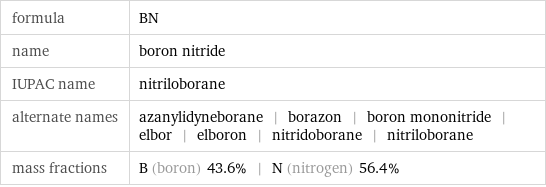
formula | BN name | boron nitride IUPAC name | nitriloborane alternate names | azanylidyneborane | borazon | boron mononitride | elbor | elboron | nitridoborane | nitriloborane mass fractions | B (boron) 43.6% | N (nitrogen) 56.4%
Lewis structure
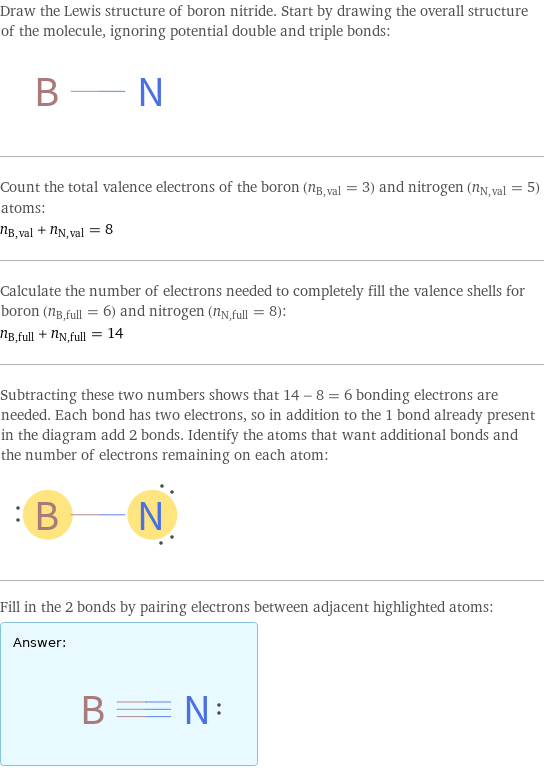
Draw the Lewis structure of boron nitride. Start by drawing the overall structure of the molecule, ignoring potential double and triple bonds: Count the total valence electrons of the boron (n_B, val = 3) and nitrogen (n_N, val = 5) atoms: n_B, val + n_N, val = 8 Calculate the number of electrons needed to completely fill the valence shells for boron (n_B, full = 6) and nitrogen (n_N, full = 8): n_B, full + n_N, full = 14 Subtracting these two numbers shows that 14 - 8 = 6 bonding electrons are needed. Each bond has two electrons, so in addition to the 1 bond already present in the diagram add 2 bonds. Identify the atoms that want additional bonds and the number of electrons remaining on each atom: Fill in the 2 bonds by pairing electrons between adjacent highlighted atoms: Answer: | |
Basic properties
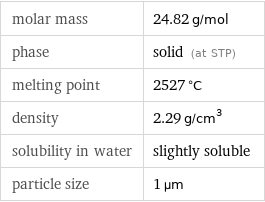
molar mass | 24.82 g/mol phase | solid (at STP) melting point | 2527 °C density | 2.29 g/cm^3 solubility in water | slightly soluble particle size | 1 µm
Solid properties (at STP)

density | 2.29 g/cm^3 refractive index | 1.728
Units

Thermodynamic properties
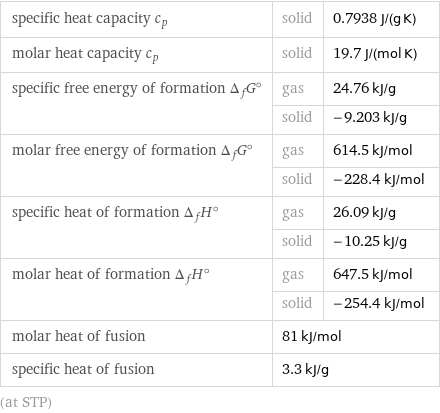
specific heat capacity c_p | solid | 0.7938 J/(g K) molar heat capacity c_p | solid | 19.7 J/(mol K) specific free energy of formation Δ_fG° | gas | 24.76 kJ/g | solid | -9.203 kJ/g molar free energy of formation Δ_fG° | gas | 614.5 kJ/mol | solid | -228.4 kJ/mol specific heat of formation Δ_fH° | gas | 26.09 kJ/g | solid | -10.25 kJ/g molar heat of formation Δ_fH° | gas | 647.5 kJ/mol | solid | -254.4 kJ/mol molar heat of fusion | 81 kJ/mol | specific heat of fusion | 3.3 kJ/g | (at STP)
Chemical identifiers
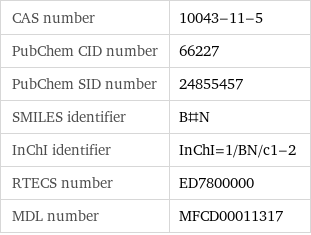
CAS number | 10043-11-5 PubChem CID number | 66227 PubChem SID number | 24855457 SMILES identifier | B#N InChI identifier | InChI=1/BN/c1-2 RTECS number | ED7800000 MDL number | MFCD00011317
Toxicity properties

RTECS classes | other